With so many different shapes, sizes, and materials, it can be hard to choose the right surfboard for kids. The best surfboard for your child depends on their skill level, weight, surfing goals, and the types of waves near you.
Regardless of your existing surfing knowledge, by the end of this article, you will know how to make an informed decision when choosing a surfboard for kids. Let’s go!
How to choose a beginner kids surfboard
Short version: Start with a large surfboard (see sizing chart below) when learning to surf. Choose a suitable size soft-top board with a rounded nose.
Choosing a beginner surfboard for kids is the same as adults, just on a smaller scale. When learning to surf, start on a large surfboard relative to your weight. That is, one that is long, wide, and has high volume. Larger surfboards are more stable and easier to paddle.
A common mistake when learning to surf is starting on a board that is too small, which can be hard to use and frustrating for beginners. The actual dimensions that are best dependent on your weight. Use the kid’s surfboard sizing chart (below) as a general guide.
In addition, it is best to start out on a surfboard that has a rounded nose, as opposed to a pointed one, because the rounded nose is more stable. Finally, I recommend beginners start with a soft-top (aka foamie) as opposed to a hard-top (more on that later). ‘
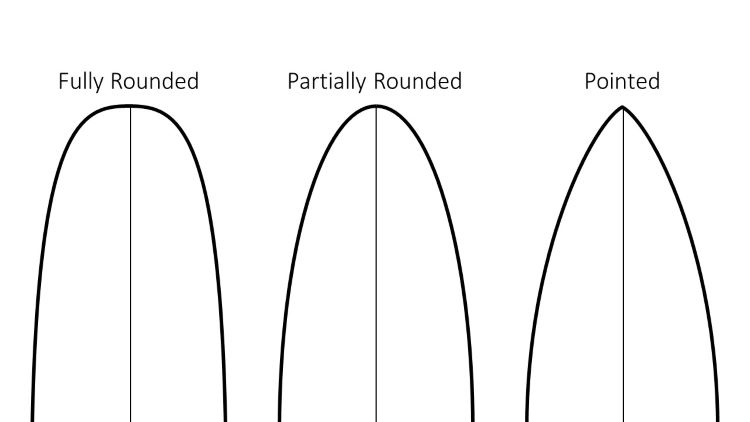
If you want to learn more, check out my full guide to choosing the right surfboard for beginners.
What size surfboard for kids?
A general rule is to choose a surfboard that is 3 feet longer than your height. Volume is also another important factor, because more volume equals more buoyancy, which makes it easier to paddle and catch waves. A general rule for volume is your weight (lbs) divided by 2 plus 10 to 15 liters.
The size chart below shows a general guide to surfboard length and surfboard volume based on the weight of the surfer. This table is meant as a guide for beginner kid surfers.
| Surfer Weight (lbs) | Minimum Surfboard length (ft, in) | Minimum Surfboard volume (liters) |
| 40 | 5’ 8” | 35 |
| 50 | 6’ | 40 |
| 60 | 6’ 4” | 45 |
| 70 | 6’ 8” | 50 |
| 80 | 7’ | 55 |
| 90 | 7’ 4” | 60 |
| 100 | 7’ 8” | 65 |
| 120 | 8’ | 70 |
| 130 | 8’ 4” | 75 |
| 140 | 8’ 8” | 80 |
| 150 | 9’ | 85 |
| 160 | 9’ 4” | 90 |
Are soft-top or hard-top surfboards better for kids?
Soft-top surfboards are better for kids (and adults too) when learning how to surf. Soft-tops are more forgiving and more manageable than hard-tops. Surfboards are hard to manage in the crashing waves, especially for beginners.
| Hard-tops | Soft-tops | |
| Pros | Better performance (maneuverability) | Super durable Lower risk of injury from collision Usually more affordable No wax needed |
| Cons | May not be as durable Higher risk of injury from collision Usually more expensive | Worse performance (maneuverability) |
| Best for | Best for beginners who have the basics down and want to progress to the next level | Best for true beginner surfers who are learning the basics. Good for kids or older people who may have more trouble managing a board |
Collisions with your surfboard are common when learning how to surf. Soft-tops reduce the risk for injury. Younger kids may struggle with handling the surfboard in the waves, or they may take a hard fall and hit the surfboard. Trust me, everyone should learn how to surf starting on a soft-top.
Hard-top surfboards are the next step after learning the basics. Learn when you can switch from a soft-top to a hard-top. Hard-tops are more responsive and have better maneuverability, which is more fun when you have the experience needed to take advantage of turning! If you are curious, learn more about the different types of surfboard materials.
Best soft-top surfboards for kids
Soft-top surfboards are super durable, affordable, and perfect for true beginners and younger kids. Soft-tops last many years and can take a beating. My family has owned a soft-top for 8 years now that is still going strong.
Soft-tops come in a variety of sizes and some different styles. Some soft-tops are more-performance oriented, making them better for intermediate surfers. More often, however, soft-tops are wide and long, which is great for beginners. Follow the chart above to choose the right length and volume surfboard for your kid.
Best budget soft-top surfboard for kids – Wavestorm 8‘
The Wavestorm is a classic beginner surfboard. Many surfers learn how to surf on a wavestorm, including myself! They are durable, reliable, and affordable. Wavestorms are a good value for beginners and a low cost of entry if you are just getting into surfing.
I own a Wavestorm surfboard, and it has lasted over 8 years. It is still going strong, and I let my beginner friends use it when we go surfing. I can personally recommend it to beginners as I used it to learn how to surf as a teenager. They also make a 7ft version which may be more suitable for lighter children.
Best overall soft-top surfboards for kids – South Bay Soft-Top Surfboards
South Bay is a big name in the surf and skate world. They make lots of different soft-top surfboards that are great for beginners. Their products are good quality and have many positive reviews.
I would recommend their 8-foot surfboard or their 7-foot surfboard, but they have surfboards from 5 feet to 9 feet long. You can find the right size for your kid!
Best high-volume soft-top surfboard for kids – TAHE Soft-top Surfboards
TAHE is a watersports company that makes kayaks, stand up paddle boards, and surfboards. They quality soft-top surfboards that are great for beginners.
Their soft-tops range from 5’6” (35 liters) to 8’6” (140 liters). That said, there is pretty much a soft-top perfect for every kid (and most adults). The “Paint Easy” models are super high volume and perfect kids learning how to surf for the first time.
Best hard-top surfboards for kids
Hard top surfboards are most commonly made of two main types of foam cores, and two main types of resins. In another article, I go into detail about the materials used for surfboards.
In brief, PU (polyurethane) boards are generally cheaper, but more fragile. Epoxy surfboards are more expensive but more durable and lighter. Both are suitable for kids, but epoxy boards are often preferred for their durability. The length and volume chart above applies to both soft-tops and hard-tops.
Best hard-top surfboard for kids transitioning from soft-top – TAHE Hard-Top Surfboards
TAHE also makes hard-top surfboards that range from 5’10” to 8’4”. Their hard-tops are made with DURA-TECH construction, which just means that they have a super durable polyethylene shell.
I can attest to their durability because I own the 7’6” Mini Longboard model. TAHE’s hard-top surfboards are great for beginner surfers who have the basics down and are looking to transition from a soft-top to a hard-top.
Best overall hard-top surfboards for kids – Degree 33 Funboards and Hybrids
Degree 33 is a reputable company with a diverse lineup of surfboards. They have hard-tops and soft-tops of all shapes and styles. For kids, choose an epoxy rather than a poly model, because it is more durable.
For kids transitioning from a soft-top to a hard top, consider the 7’2” Poacher Funboard (Epoxy-soft-top hybrid). This is a hybrid soft-top, epoxy surfboard. In fact, it is an epoxy surfboard with a foam skin on the deck, which means it handles like a hard-top, but with a softer deck that doesn’t require wax.
If your kid may prefer a true hard-top, choose the 7’2” Poacher Funboard (Epoxy). It has the same great shape as the soft-top hybrid version, but a full epoxy board. Degree 33 sells different sizes of these construction types as well.
Best hard-top for advanced kid surfers – South Bay Epoxy Surfboards
South Bay is most known for their soft-tops, but they do offer two hard-top epoxy surfboards. They are relatively short in length at under 6 feet, but they are wide and have decent volume. Nevertheless, these boards are best reserved for intermediate and advanced surfers who want lots of maneuverability in a short board.
If your kid is progressing in surfing and wants to do more maneuvers, South Bay’s epoxy surfboards might be a good option for them! Not to mention, they are quality crafted and look great.
Other tips on buying a surfboard for kids
Surfboards can be bought online or in person. While online shopping is convenient, there may be an extra charge for shipping. Boards can also be damaged during shipping, but that isn’t really an issue for soft-tops.
Your local surf shop is another option. Buying a surfboard in person is nice because you can see and feel the board before you buy it. Also, there are knowledgeable employees to help you choose the right board. While you do have to drive to the store, you get to take home your new board that day. Plus, you can pick up any other gear you may need.
In another article I discuss the pros and cons of buying a surfboard online or in person. Buying a used surfboard is a great way to save money. Learn more about the mistakes to avoid when buying a used surfboard.
Other tips on learning how to surf for kids
Learning how to surf can be super fun, but also discouraging. Surfing is hard. It is so much more than just popping up and balancing. Surfing is all about timing and positioning, both in the water and on your surfboard. I always recommend beginners take a surf lesson.

While surfing is challenging, it can be deeply rewarding. There is no feeling like bobbing around in the ocean and gliding down the face of the wave. You don’t need to be a super athlete to surf. In fact, anyone can learn how to surf!
Surfing is safe for kids when the correct precautions are taken. If you’re thinking about teaching your kids how to surf, do it! I am so grateful my parents taught me how to surf. Surfing is one of my favorite things to do.
Hopefully you know more about buying a surfboard for kids! If you’re shopping for your own surfboard, read my full guide to buying a beginner surfboard or check out the best longboard surfboards you can buy online.
Heads up! Surfing is awesome but it can be dangerous! Learn more about how to stay safe and avoid dangers while surfing. If you are a beginner surfer, check out my other articles about surfing and my ultimate guide to learning how to surf.



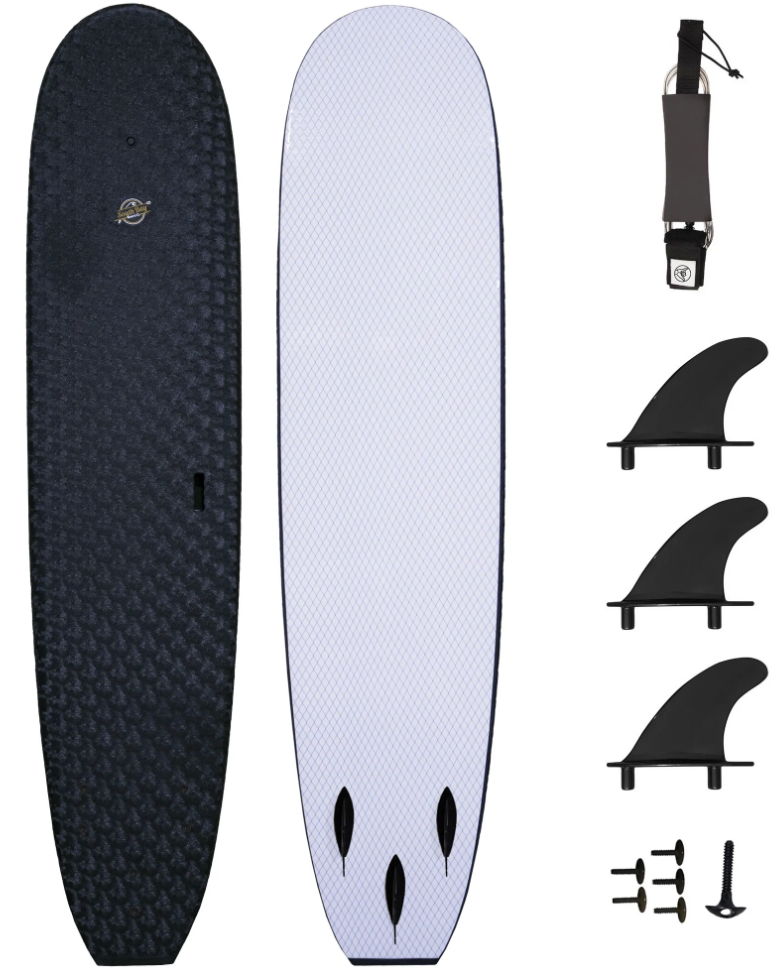
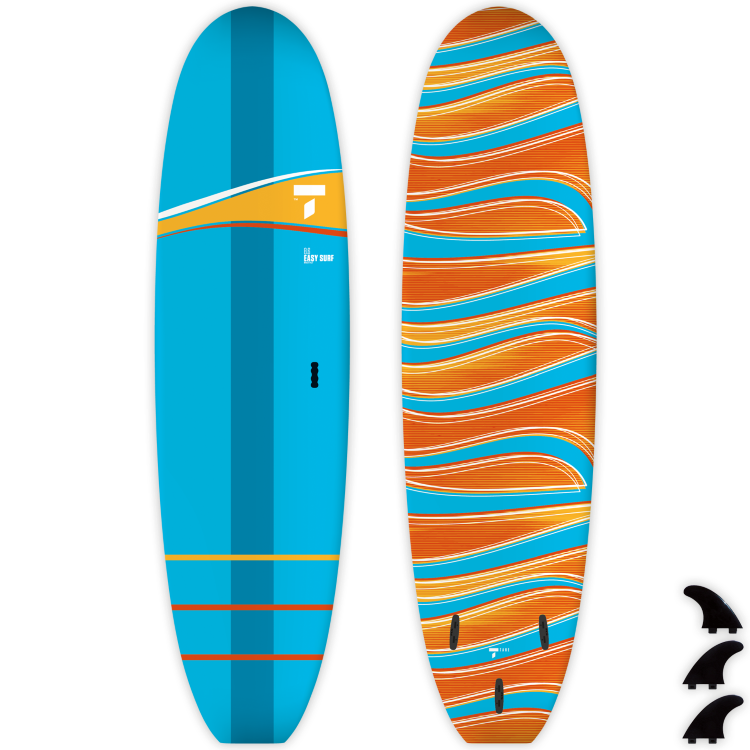
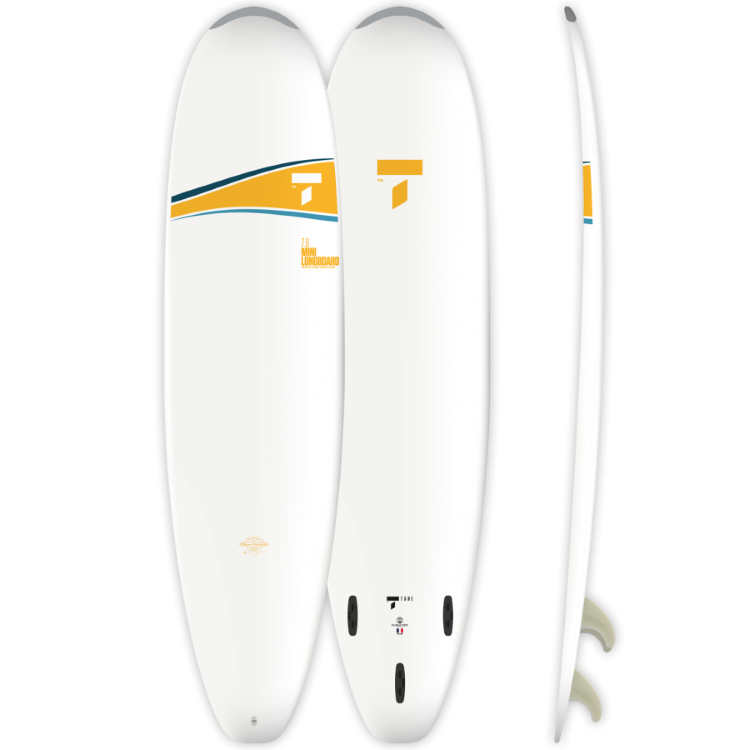
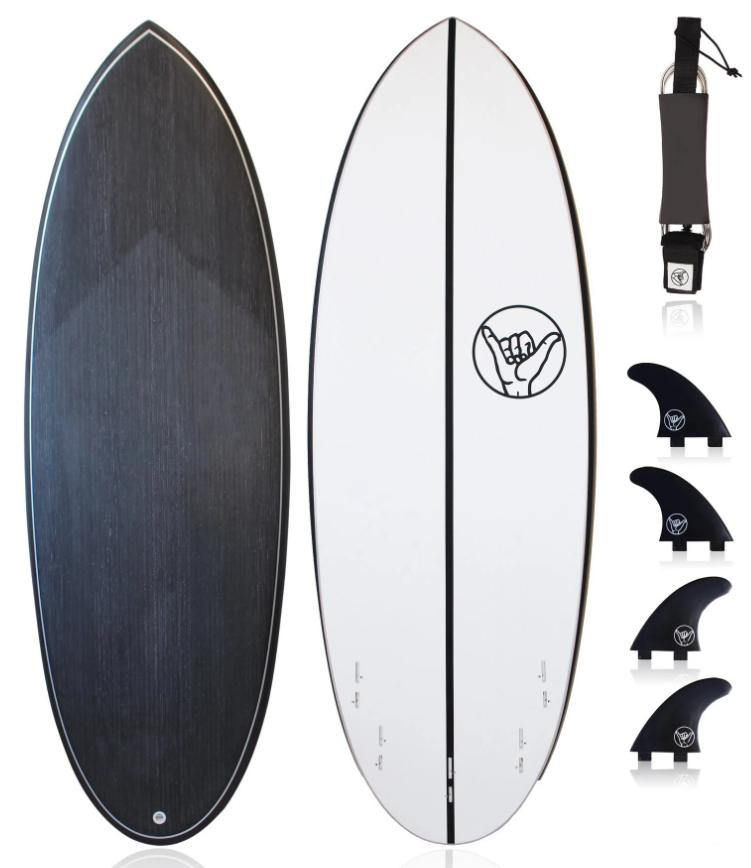
![Best longboard surfboards [2023] – all skill levels surfer with surf hat](https://mindfulladventure.com/wp-content/uploads/2022/10/surf-hat-crop-1000-270x180.jpeg)




